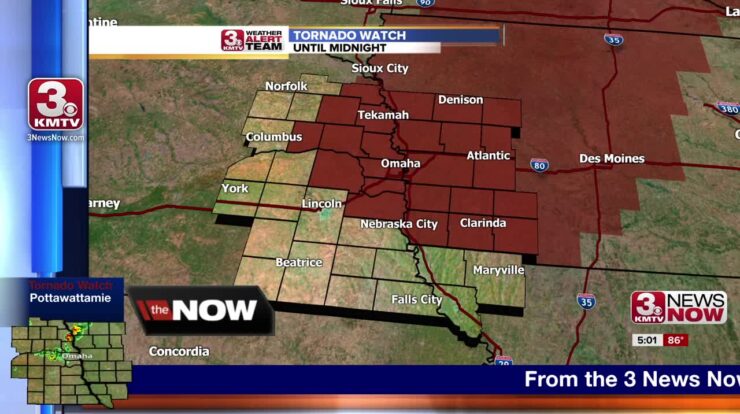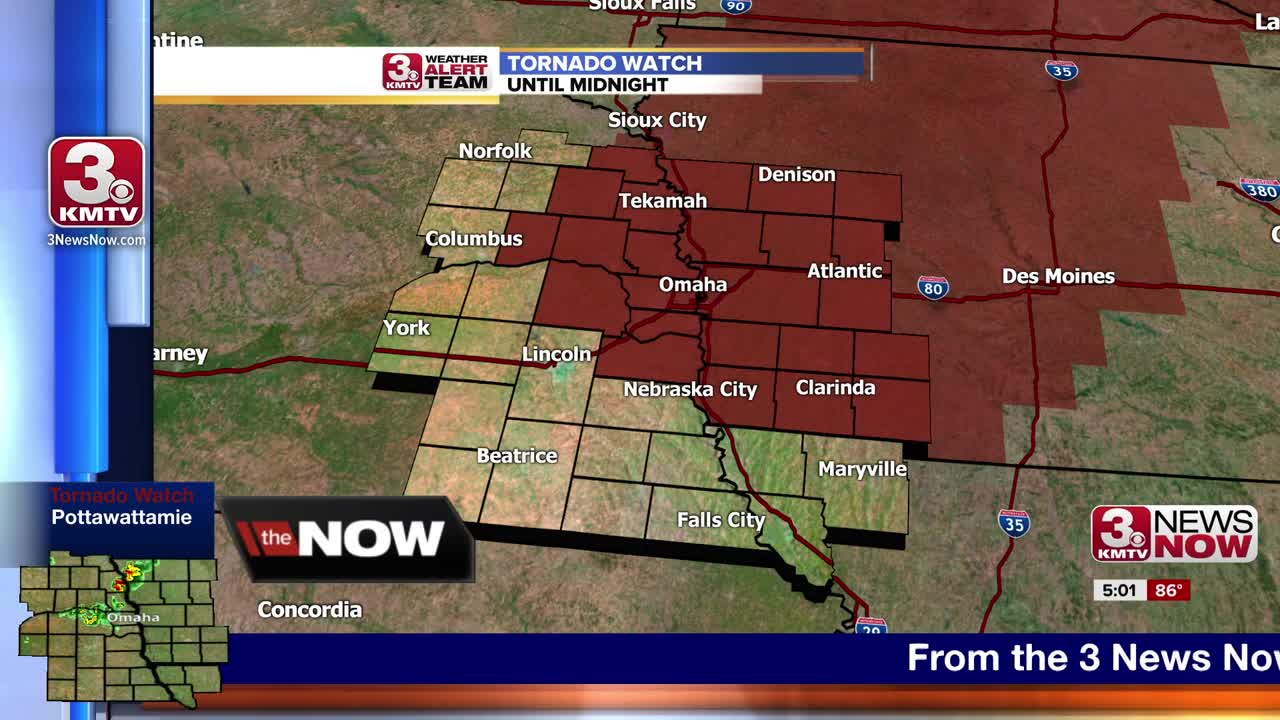
Tornado watch omaha – As the ominous clouds gather over Omaha, a tornado watch sets the stage for this enthralling narrative, offering readers a glimpse into a story that is rich in detail and brimming with originality from the outset.
From the history of tornadoes in the region to the latest warning systems, this comprehensive guide delves into the intricacies of tornado preparedness, providing invaluable insights for residents and visitors alike.
Tornado Watches: An Overview
A tornado watch is a meteorological warning issued when conditions are favorable for the development of tornadoes. It does not mean that a tornado has been spotted or is imminent, but rather that the environment is conducive to tornado formation.
Tornado watches are typically issued by the National Weather Service (NWS) when there is a risk of severe thunderstorms and tornadoes within the next several hours.
The criteria used to issue a tornado watch include:
- The presence of strong updrafts and wind shear in the atmosphere
- The availability of moisture and instability
- The presence of a lifting mechanism, such as a cold front or dry line
Tornado watches can have a significant impact on communities. When a tornado watch is issued, residents should be prepared to take shelter if a tornado warning is issued or if they see signs of a tornado, such as a funnel cloud or debris rotating in the air.
Omaha’s Tornado History
Omaha has a long and well-documented history of tornadoes. The city has been hit by several major tornadoes, including the Omaha Tornado of 1913, which killed over 100 people and destroyed much of the city’s downtown area.
In recent years, Omaha has been hit by several smaller tornadoes, including the Elkhorn Tornado of 2014, which caused significant damage to the city’s western suburbs.
The areas of Omaha that are most vulnerable to tornadoes are the eastern and western suburbs. These areas are located in the path of the prevailing storm track and are often hit by severe thunderstorms and tornadoes.
Tornado Safety in Omaha: Tornado Watch Omaha
When a tornado watch is issued for Omaha, residents should take the following steps:
- Monitor weather reports and listen for tornado warnings
- Have a tornado safety plan and emergency kit in place
- Identify a safe place to shelter in case of a tornado
- Be prepared to evacuate your home if necessary
The best place to shelter from a tornado is in a below-ground shelter, such as a basement or storm cellar. If you do not have access to a below-ground shelter, you can take shelter in an interior room on the lowest floor of your home, such as a bathroom or closet.
Tornado Warning Systems in Omaha
The National Weather Service (NWS) operates a network of Doppler radar systems that are used to track tornadoes and issue tornado warnings. The NWS also issues tornado warnings through the Emergency Alert System (EAS).
In Omaha, tornado warnings are typically issued by the NWS office in Valley, Nebraska. The NWS office in Valley uses a variety of data, including radar data, satellite data, and surface observations, to issue tornado warnings.
Tornado warnings are typically issued within minutes of a tornado being spotted or indicated by radar. When a tornado warning is issued, residents should take shelter immediately.
Media Coverage of Tornado Watches
Local media plays an important role in disseminating information about tornado watches. When a tornado watch is issued, local media outlets will typically broadcast the watch and provide updates on the situation.
Accurate and timely reporting is essential during tornado watches. Local media outlets should provide clear and concise information about the watch, including the areas that are affected and the potential risks.
Local media outlets should also provide information on how to stay safe during a tornado watch. This information should include tips on how to identify a tornado, how to take shelter, and how to evacuate if necessary.
Community Preparedness for Tornado Watches
Community preparedness is essential for reducing the impact of tornadoes. Local organizations and government agencies can play a vital role in educating residents about tornado safety and helping them prepare for tornadoes.
One important aspect of community preparedness is public education. Local organizations and government agencies can provide information about tornado safety through a variety of channels, such as public service announcements, brochures, and presentations.
Another important aspect of community preparedness is emergency planning. Local organizations and government agencies can help residents develop tornado safety plans and emergency kits. They can also provide information on how to evacuate in case of a tornado.
Tornado Watch Data and Statistics

The National Weather Service (NWS) maintains a database of tornado watches that have been issued in the United States. This database includes information on the date, time, and location of each watch, as well as the severity of the watch.
According to the NWS, an average of 900 tornado watches are issued in the United States each year. Of these watches, about 10% result in a tornado warning.
In Omaha, the NWS issues an average of 10 tornado watches per year. Of these watches, about 5% result in a tornado warning.
Final Thoughts

In the face of nature’s fury, knowledge and preparation are our most potent weapons. By understanding the risks, implementing safety measures, and staying informed, we can navigate the challenges of tornado season with confidence and resilience.
FAQ Overview
What is a tornado watch?
A tornado watch indicates that conditions are favorable for the development of tornadoes in a specific area.
What should I do when a tornado watch is issued?
Stay informed about weather updates, prepare an emergency kit, and identify a safe shelter location.
How can I receive tornado warnings?
Tornado warnings are issued through various channels, including weather apps, local media, and NOAA Weather Radio.
What is the difference between a tornado watch and a tornado warning?
A tornado watch means conditions are favorable for tornadoes, while a tornado warning indicates that a tornado has been spotted or detected by radar.





